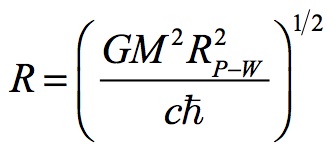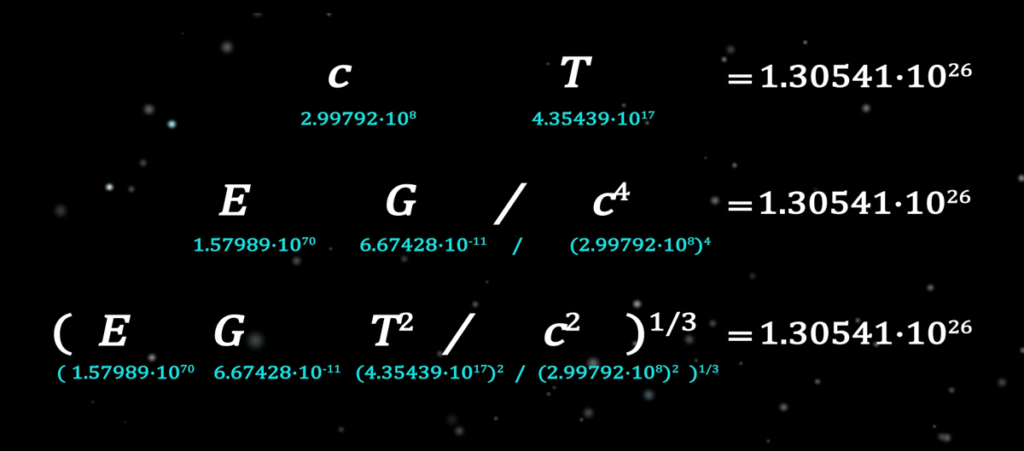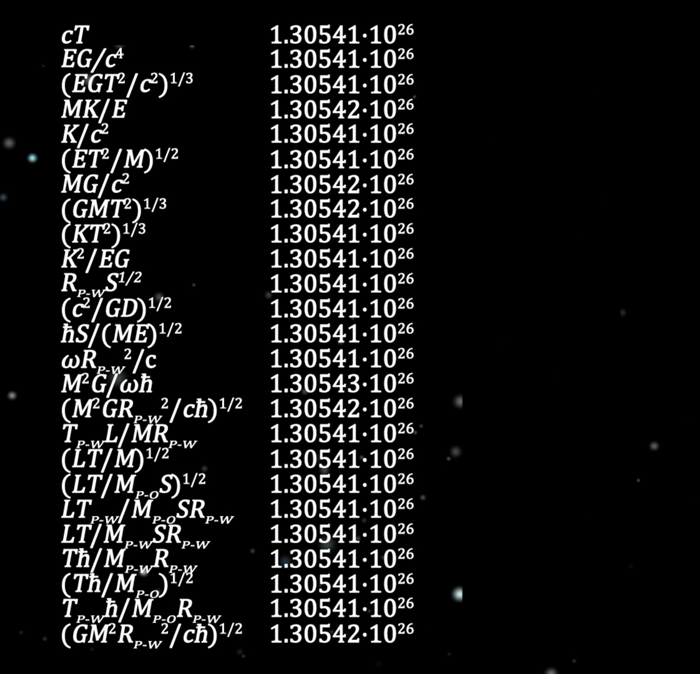Download this chapter for offline viewing (no videos, 1MB)
Download this chapter for offline viewing (includes video content, 20MB)
The fundamental components of the Universe are ratios of other elements. Together they comprise the Universal Equation. This is the power of Occam’s Razor. The “Universal Equities” spreadsheets list some equations that fall out of the formulations in the prior spreadsheets. These Universal Equities spreadsheets can be found in Appendix B.
Measured Quantities
Each factor calculated in the three “The Dynamic Universe” spreadsheets are highlighted in the Universal Equities spreadsheet for three points in the Universe’s existence. What becomes clear is that factors, such as G, the velocity of light, the mass of the Universe, and Planck’s angular momentum are not constants throughout the history of the Universe.
A few constants remain. Planck-Wheeler’s radius, the Kepler-Otto Universal Curvature Constant, and Planck-Wheeler’s mass are true constants for all of history.
There are many more equations than those shown here since every component of the Universe is interrelated. In addition, other factors, such as e2, alpha (α), Boltzmann’s constant, and the radius of the electron, will eventually be tied into the Universal Equation in a like manner.
Three Ubiquitous Events
Three ubiquitous events common to the entire Universe will be explored in the “Universal Equities” spreadsheet. The first is the Big Bang. The second is the time when the Universe cooled enough for hydrogen nuclei to capture the free electrons in the primordial plasma. The third common event is the present moment. There are other ubiquitous events for the Universe. Most of these occurred when the Universe underwent a change of state, e.g., when quarks first formed or when these congealed into protons and neutrons, but these are unobservable with current technology.
Big Bang
The Big Bang is the first event. Its occurrence established the essence of what was to come. The Big Bang event occurred as the first waveform pulled in the initial Planck-Wheeler mass from the initial conditions. This waveform existed within the confines of the spacetime closure of the first Planck-Wheeler radius of the Universal Black Hole.
Once established, the Universe’s factors evolved with the change in the ratios of the radius of spacetime, to the surface area of spacetime, to the volume of spacetime. In this way the Universe established the laws of physics.
Cosmic Background Radiation Release
The cosmic background radiation release event records the moment of transparency, i.e., the point when the particles of the Universe became neutrally charged. Its occurrence was ubiquitous throughout the Universe. It is a product of the most recent change of state for the Universe. This state change is when ionization was replaced with atomic neutrality.
Fortunately, it is an observable point in history. The physical factor quantities for the Universe were very different then, but the synchronous change in these ratios makes the differences unobservable through today’s lens of the flow of time.
Present
Time is just strung-together present moments. Each of these is common throughout the Universe since every mass shares the same radius. While we can calculate the Universe’s conditions for each historical point in the Universe’s history, we cannot measure them in all directions at once. All observations involve differing masses; observable in different directions; with light originating at different points in the Universe’s history.
Formula Manipulation
Once a formula has been determined, it’s used to develop other formulations. E = mc2 can be manipulated to replace c with (E/m)1/2. Occam’s razor produces enough fundamental equations so many similar substitutions can be made. For example, R as shown here = cT, but R also equals some seemingly unrelated quantities, such as:

There are many functions listed here, but there are many that are not. If so inclined, try to formulate your own. Send them to the author and these will be added to the spreadsheet.



